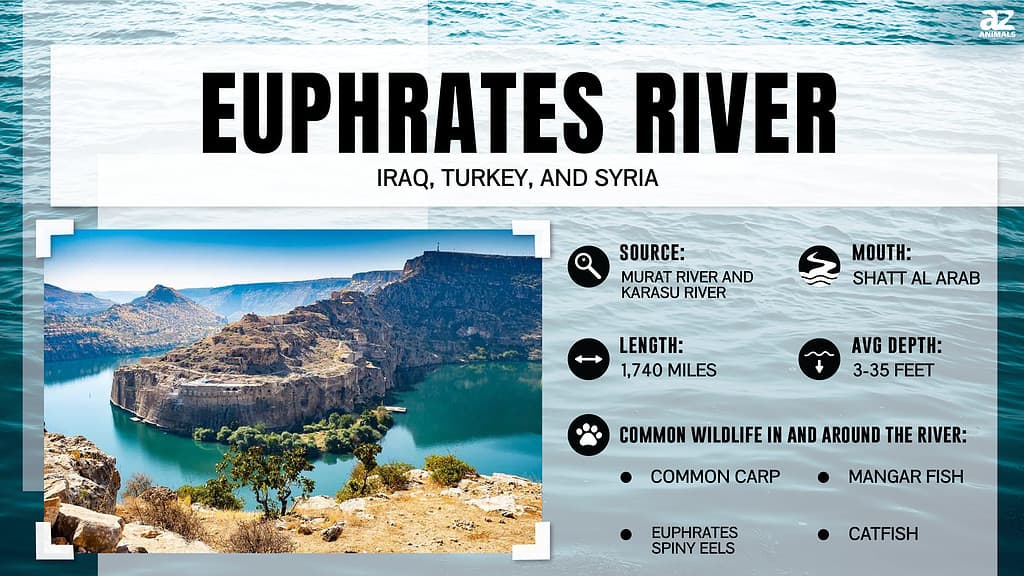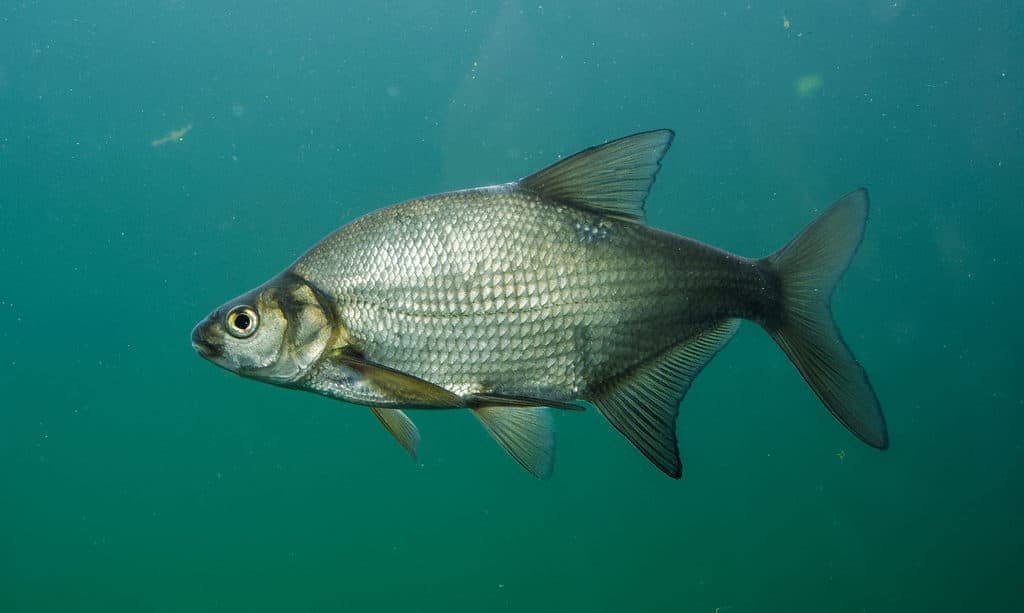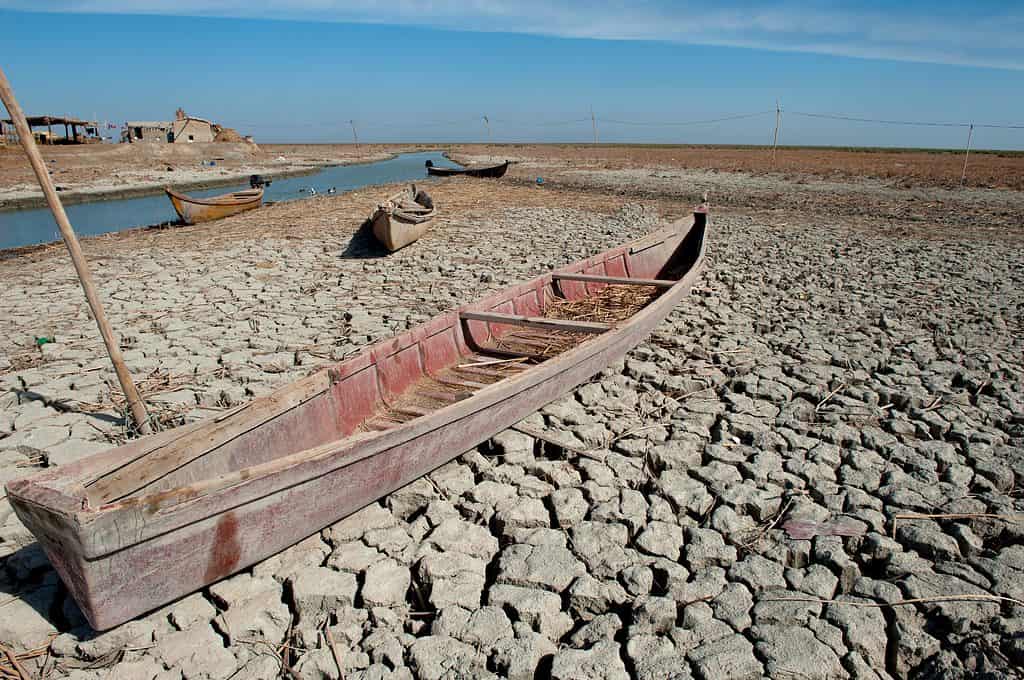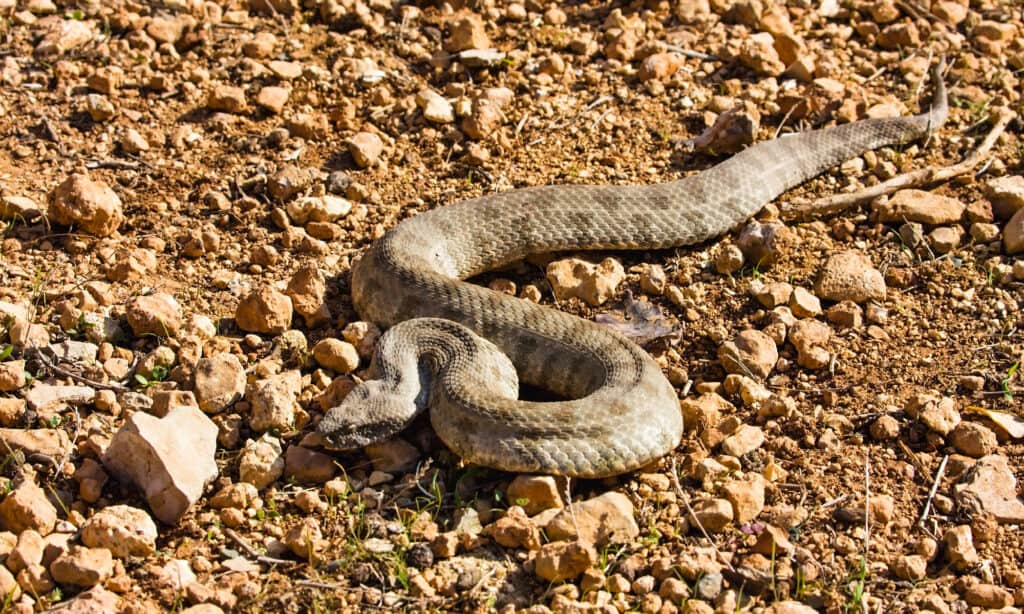The Euphrates River is one of the most famous rivers in the world. This river, along with the Tigris River, helped supply water to Mesopotamia, a region often described as the birthplace of recorded history. The river flows through three countries including Turkey, Syria, and Iraq before reaching its mouth. Along its very long flow, people see many interesting creatures living in the river.

Discover what lives at the bottom of the Euphrates River along with the challenges facing the body of water.
About the Euphrates River

The Euphrates River is one of the most important rivers in the world.
©yunus_oz/Shutterstock.com
The Euphrates River is located in Western Asia, and it flows for a total of 1,740 miles. The river has two sources, the Murat River and the Karasu River. From its source in Turkey, the river flows through Syria and Iraq until it reaches its mouth at Shatt al-Arab, also called the Swift River or the River of the Arabs.
The Euphrates and Tigris Rivers are often mentioned together when speaking about world history. After all, they were incredibly important to the development of the Mesopotamia region and cities like Sumer located in the Fertile Crescent. Humans settled in this region and started farming and irrigation to create early human civilizations.
The first cities rose along the Euphrates River, and humans created written words, astronomy, trade routes, and more. Understating the importance of the Euphrates River to this region is nearly impossible.
Today, the Euphrates River is still very important to those living along its banks. The river has been used for the development of hydroelectric power, irrigation, and drinking water. Since the river flows through three countries, agreements between Turkey, Syria, and Iraq continue to be negotiated as each nation’s population requires water to thrive.
Over a dozen dams exist along the river, with people farther downriver receiving a dwindling share of the water as the years go on.
What Lives at the Bottom of the Euphrates River?

The common carp is found in some places along the Euphrates River.
©Michal Pesata/Shutterstock.com
Many different creatures live at the bottom of the Euphrates River including the mangar, gar, spiny eels, common carp, and the yellowfin barbel. Some of the fish that a person can expect to see in the Euphrates River include:
- Common carp
- Mangar fish, also called the pike barbel
- Euphrates spiny eels
- Catfish
- Anchovies
- Gar
The mangar is the largest fish in the Euphrates River. In fact, they’re one of the longest freshwater fish in the world. They can reach over 7 feet in length and weigh over 300 pounds. They’re very popular with people that fish for sport.
Many other animals live near the Euphrates River even though they do not live within it. That includes many species of snakes like the Levantine viper, desert horned viper, and Persian horned viper.
These snakes are becoming more of a problem since the water level in the Euphrates River is dropping. The snakes are being displaced by the heat and dryness in the region, bringing them into contact with more people than usual. People and animals alike have been impacted by this plague of venomous snakes.
Challenges Facing This Famous River

The Euphrates River has been drying up for years.
©John Wreford/Shutterstock.com
Knowing what lives at the bottom of the Euphrates River is becoming easier than before. After all, water levels in parts of this river have been dropping for years. A combination of drought, dam constructions, and ongoing conflicts over water have caused the water levels to plummet.
As a result, less water is available to people that live or lived along its banks. The river’s lower water levels have impacted millions of people, and it could get worse if low rainfall and high temperatures continue to punish the area.
The governments of Turkey, Iraq, and Syria continue to point fingers at one another concerning the drop in water levels. They accuse one another of having too many dams, reserving too much water, wasting water, and having poor water infrastructure. Not helping matters is that both Iraq and Syria have suffered through years of instability and war.
Currently, it seems as though there are no quick and easy fixes to satisfy the needs and wants of everyone that lives along the banks of this famous river.
Is the Euphrates River Dangerous?

The Levantine viper is a venomous, deadly snake that lives near the Euphrates River.
©Vladislav T. Jirousek/Shutterstock.com
The Euphrates River is not particularly dangerous as a body of water. Certainly, venomous snakes live in the marshy areas near the river and within the banks of the water. However, that’s not much different from many other rivers around the world.
The greatest danger posed by the river right now is the lack of water available in it. Years of drought have caused the river’s depth to plummet. People who live on the river banks and rely on it for food and water are facing a dire situation.
Now that you know what lives at the bottom of the Euphrates River, it’s important to realize that establishing a comprehensive list of animals in these waters is very difficult. The river flows for 1,740 miles and passes through three countries. Various fish live at the bottom of the river, but many amphibians, reptiles, and birds thrive in the waters as well. Unfortunately, as the waters recede, more portions of the river’s bottom become visible.
The photo featured at the top of this post is © Sadik Yalcin/Shutterstock.com
Thank you for reading! Have some feedback for us? Contact the AZ Animals editorial team.






